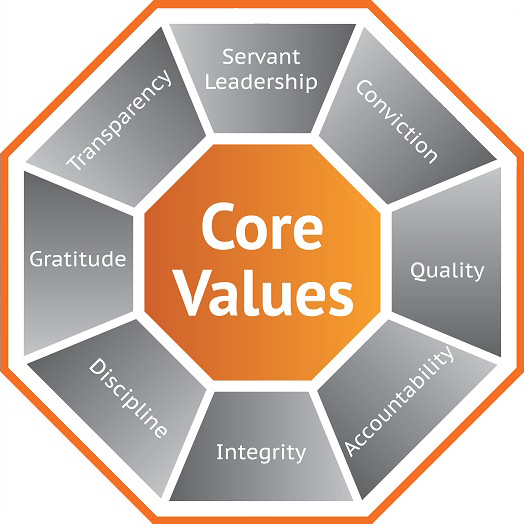In the late 1990s, the U.S. government introduced a new type of retirement account, thanks to a Delaware Senator named William Roth. He championed the idea of paying taxes up front on retirement savings so that ordinary Americans could reap tax-free rewards later. This was a significant shift from the traditional approach (literally, the Traditional IRA), where you got a tax break today but paid taxes when you took the money out in retirement. Senator Roth’s idea turned into law, and the Roth IRA was born in 1998, forever changing how we strategize about taxes and retirement.
Fast forward to today. Should you convert to a Roth? In other words, should you voluntarily pay taxes on some of your retirement money now in exchange for tax-free growth and withdrawals in the future? The choice isn’t simple, and it’s certainly not one-size-fits-all. In this post, we’ll break down what a Roth conversion is, when it might make sense (and when it might not!), and why the decision often hinges on your unique situation.
What Is a Roth Conversion?
A Roth conversion means moving money from a tax-deferred retirement account (like a Traditional IRA or 401(k)) into a Roth IRA and paying income taxes on what you convert. In doing so, you essentially pre-pay the taxes that you’d otherwise owe in retirement. Once in the Roth IRA, that money can grow tax-free, and qualified withdrawals in retirement come out tax-free as well.
Key features of a Roth IRA (after conversion):

-
Tax-Free Growth:
Once your money is in a Roth, all the investment growth (including dividends) is free from taxes. If your $10,000 grows to $20,000, that extra $10k isn't taxed at any point.
-
Tax-Free Withdrawals:
In retirement (generally after age 59½ and after at least five years in the Roth), you can withdraw money without paying any tax.
-
No Required Minimum Distributions:
Unlike Traditional IRAs, Roth IRAs do not force you to withdraw at a certain age. Traditional accounts have RMDs (required minimum distributions – basically forced withdrawals that start in your early 70s), but Roths let you keep your money invested as long as you want. This gives you significantly more control and flexibility in retirement.
-
The Five-Year Rule:
Any converted funds must stay in the Roth for at least five years (or until age 59½, whichever is later) to avoid penalties on withdrawing those converted amounts. Otherwise, you could face a 10% penalty on that withdrawal.
So, in summary, a Roth conversion means paying now in exchange for tax-free bliss later. But how do you know if that trade-off is worth it? Let’s look at scenarios where a Roth conversion might be beneficial and when it might not.
When Does a Roth Conversion Make Sense?
Converting to a Roth and paying taxes now can make a lot of sense in certain situations. Here are some common “green lights” for doing a Roth conversion:
When the Market is Down
If your portfolio has taken a dip due to a market downturn or recession, converting during that period can be savvy. Since the value of your assets is lower, paying tax on that lower value generally costs you less. Then, if the market bounces back afterward, all that recovery growth happens tax-free in your Roth. In other words, a down market is like a sale on taxes.
Portfolio Value: Market Dip Conversion Opportunity

Low-Income Years or Temporary Tax Lull
Will you have a year when your income will be unusually low? Maybe you’ll take some time off work, retire early, or have a year with lots of deductions. These low-income (and presumably lower tax bracket) years are prime times for Roth conversions. If you find yourself in, say, the 12% tax bracket for a year when you’re normally in the 22% or higher, converting some of your IRA at 12% tax can be a bargain. Many retirees strategically plan conversions in the early retirement years before Social Security or required distributions kick in, exactly because their taxable income is low during that window.
Expecting Higher Taxes Later
This one is big. If you suspect that in the future you (or the country in general) will face higher tax rates, a Roth conversion is a way to lock in today’s tax rates and a lower overall tax bill. For example, maybe you’re in a moderate tax bracket now, but once you start required distributions from a large 401(k) plus Social Security, you might be in a higher bracket in retirement. Or perhaps you simply believe that federal tax rates are going up in the future. In any case, you should ask yourself: would you rather pay taxes now on a known rate or an unknown one later? Tax brackets are completely out of your control, so many feel greater peace of mind dealing with what they know rather than an uncertain future rate.
You Have Funds to Pay the Tax Bill
A conversion triggers income tax on the amount moved to Roth. To really reap the benefits, it’s ideal if you can pay that tax with separate money, not from the IRA itself. If you have savings or other funds available to cover the tax, your entire IRA amount gets to move into the Roth and continue growing.
For example, if you convert $50,000 and it’s going to cost $10,000 in taxes, paying that $10k from a savings account allows the full $50k to live on in the Roth. If instead you had to take $10k out of the IRA to cover taxes, only $40k would go to the Roth, ultimately diminishing the benefit. So, a good time to convert is when you have the cash on hand to cover the tax.
Tax Payment Strategy: Out-of-Pocket vs. IRA Withdrawal

Pay Tax Out-of-Pocket
(All tax-free)
Pay Tax from IRA
(All tax-free)
This example assumes 7% annual growth over 10 years for illustration purposes.
Long Time Horizon for Growth
The younger you are (or the longer you can leave the money invested), the more years of potential tax-free growth you get after a conversion. If you’re, say, 40 and have 25+ years until retirement, a Roth conversion now could mean decades of compounded growth that you’ll never pay tax on. Even if you’re 60, converting some now means that money could sit tax-free for your lifetime (and even benefit your heirs tax-free for years).
Those are some of the prime scenarios where converting to Roth could be advantageous. In short, it makes sense to convert when taxes are on sale for you, either because of a dip in your income, a dip in the market, or a belief that today’s tax rates are a good deal compared to tomorrow’s.
Now, let’s flip the coin. When might a Roth conversion not make sense?
When Not to Convert to Roth
Just because Roth conversions have big potential benefits doesn’t mean they’re right for everyone at all times. Here are scenarios where you might hold off or say “thanks, but no thanks” to a Roth conversion:
Need the Money in the Short Term
If there’s a good chance you’ll need to withdraw this money within the next five years, converting is likely a bad move. As mentioned earlier, withdrawing converted funds before five years (and before age 59½) can slap you with a 10% penalty. Even aside from the formal rule, a Roth conversion is most beneficial when the money can stay put and grow. It’s not a quick in-and-out strategy. So, if you’re planning to use that IRA money in the near future (for a home purchase, emergency, etc.), you’re usually better off leaving it Traditional to avoid an immediate tax and potential penalties.
A Conversion Would Push You into a Higher Tax Bracket
The point of the Roth is to pay fewer taxes overall. So if a conversion pushed you up a tax bracket for the year, you’re adding extra and unnecessary taxes into your equation. Now, that doesn’t mean a conversion is off the table. Instead, you can convert as much as possible without breaking the threshold into the next bracket.
Strategic Multi-Year Conversion: Stay Within Tax Brackets

2025 Tax Brackets (Married Filing Jointly)
No Extra Cash to Pay Taxes
If you would have to pay the conversion tax out of the IRA itself (because you don’t have other savings to cover it), that often tilts against doing the conversion. Using IRA funds to pay the tax means you’re removing money from your retirement account to hand to the IRS, and that amount won’t be growing for you anymore. It also effectively reduces the amount that gets into the Roth, which can greatly delay the benefit of the conversion or negate it entirely. For example, converting a $100,000 IRA when you have no cash to pay taxes could mean you end up with only ~$75,000 in the Roth (if 25% tax bracket and you withhold taxes from the conversion). That’s a big initial setback to overcome.
Medicare Surcharges
If you’re around age 63 or older, a conversion could inadvertently raise your Medicare costs two years later. This is due to IRMAA – Income-Related Monthly Adjustment Amount, an extra surcharge added to Part B and Part D premiums whenever your modified adjusted gross income crosses certain thresholds, so a large conversion today could push you into a higher IRMAA bracket down the road.
You’re Unsure or Might Change Your Mind
Prior to 2018, you used to be able to “undo” a Roth conversion (called recharacterization) if you regretted it. That is no longer the case. Under current law, once you convert and pay the tax, you can’t take it back. So if you’re on the fence or your situation is volatile, be cautious. Only convert an amount you’re confident about, because it’s a one-way door.
In short, a Roth conversion might not make sense if it leaves you worse off in the near term or if the tax tradeoff just isn’t in your favor. Everyone’s circumstances are different, which is why personalized advice is important.
Should You Consider a Roth Conversion This Year?

Answer a few questions to help determine if a Roth conversion might be worth exploring for your situation.
Do you have cash available outside your retirement accounts to pay the taxes on a conversion?
Converting requires paying income tax on the amount converted. Having separate funds to pay this tax could make the conversion more beneficial.
Is this year a lower-income year for you compared to your typical earnings?
Examples: taking time off work, early retirement before Social Security kicks in, or a year with significant deductions.
Do you expect to be in a higher tax bracket in retirement than you are now?
Consider future required distributions, Social Security, pensions, and potential tax law changes.
Can you leave the converted funds untouched for at least 5 years?
The five-year rule requires converted funds to stay in the Roth to avoid penalties.
Has your portfolio experienced a recent decline in value?
Converting when values are down could mean paying less tax on the same assets.
Are you age 63 or older and concerned about Medicare surcharges?
Large conversions could increase your Medicare premiums through IRMAA surcharges two years later.
A Roth Conversion Could Be Worth Exploring
Based on your answers, a Roth conversion might offer potential benefits for your situation this year. The combination of factors you've indicated could create favorable conditions for converting some of your traditional retirement funds to a Roth IRA.
However, every situation is unique, and this tool provides general guidance only. We recommend consulting with a qualified financial advisor or tax professional to analyze your specific circumstances, run detailed projections, and determine if and how much to convert.
A Roth Conversion May Not Be Optimal Right Now
Based on your answers, a Roth conversion might not provide the most benefit for your situation at this time. The factors you've indicated suggest that waiting or exploring other strategies could be more advantageous.
Keep in mind that circumstances change, and what doesn't make sense today might be beneficial in the future. Consider revisiting this decision during lower-income years or when market conditions change. A financial advisor could help you identify the right timing and alternatives for your retirement planning.
Consider a Partial Conversion or Further Analysis
Based on your answers, you have some factors that favor a Roth conversion and others that don't. This mixed picture suggests that a partial conversion or more detailed analysis could be worthwhile.
You might benefit from converting just enough to stay within your current tax bracket, or waiting for more favorable conditions. A financial advisor could help you model different scenarios and find the strategy that could work best for your unique situation.
Closing Thoughts
Deciding when (or if) to convert to Roth is a bit like navigating with two maps: one of the known present and one of the uncertain future. You know what tax rate you pay today and the immediate cost of conversion. You can estimate and guess what might happen later, but there’s no guarantee. The right move depends on your best guess and your comfort with that guess.
If you’re unsure, that’s completely natural. Roth conversion decisions are one of those areas where a financial planner or tax advisor can provide the expertise needed to help you make a decision. They can run detailed projections to compare scenarios and help you weigh the pros and cons with your numbers.
If the idea of “tax-free retirement money” appeals to you but you’re not sure how it applies in your case, feel free to reach out to us for a consultation. We can discuss your goals, look at the numbers, and see if a Roth conversion (now or in the future) fits into your overall plan. Just click the button below to arrange a consultation!

